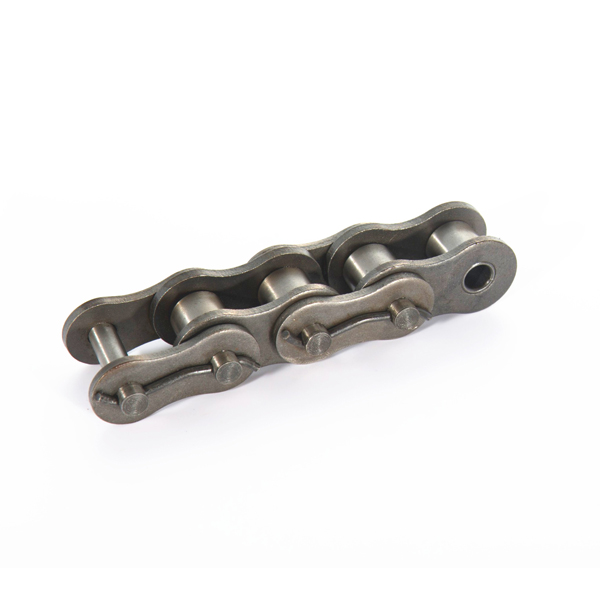The outer chain plate and the pin shaft, the inner chain plate and the sleeve are respectively connected by interference fit. The gap between the sleeve and the pin, and the gap between the sleeve and the roller are matched. When the sprocket teeth are engaged with the chain, the friction between the rollers and the teeth is basically rolling friction. Sliding friction between sleeve and roller, pin and sleeve.
The roller link plate is usually formed in a figure eight shape, so that the strength of each part is close, and the inertia and weight during movement are reduced. Compared with belt drive, roller chain drive has a compact structure, small load acting on the shaft, large carrying capacity, high efficiency, and accurate average transmission ratio.
One of the main failure modes of the transmission chain is the wear of the chain. The wear process of the chain in the transmission process, the relative movement of the contact part of the pin and the sleeve, the roller and the baffle, the surface material is gradually lost and deformed.
The working conditions of the casting machine are very bad. There is always a large amount of ore dust and high temperature water vapor around the working environment. In the conveyor chain structure, the rollers belonging to the outside are easily corroded by water vapor, and the rollers work at the same time. The gap between the bushing and the bushing is also more susceptible to the intrusion of dust, and then some impurities will be generated under the action of aluminum liquid, lubricating oil, etc., and the accumulation of impurities will cause the bushing and rollers, pins and drums. The friction resistance distance between the components is accompanied by the persistence of rust.
The roller chain transmission is composed of a driving sprocket, a driven sprocket and a closed chain wound on two wheels. It transmits motion and power by the meshing between the chain and the sprocket teeth. Compared with belt transmission, roller chain transmission has the advantages of compact structure, small load acting on the shaft, large carrying capacity, high efficiency (generally up to 96%-97%), and the ability to maintain an accurate average transmission ratio. However, the chain drive has high requirements for installation accuracy, and there are phenomena such as vibration and shock during work, and uneven instantaneous speed.
The chain drive is suitable for occasions where the two shafts are far apart, the average transmission ratio is required to be unchanged, but the requirements for the instantaneous transmission ratio are not strict, and the working environment is harsh (oil, dust, high temperature), etc. It is widely used in the mechanical transmission of metallurgy, light industry, chemical industry, machine tool, agriculture, lifting and transportation and various vehicles.
There are many types of chains, which can be divided into three types: drive chains, lifting chains and traction chains according to their uses. Lifting chains and drag chains are used for hoisting machinery and transportation machinery. In general machinery, the most commonly used is the transmission chain. The main types of transmission chains include short-pitch precision roller chains (roller chains for short) and toothed chains, among which roller chains are the most widely used. This chapter mainly discusses related design issues of roller chain transmission.
